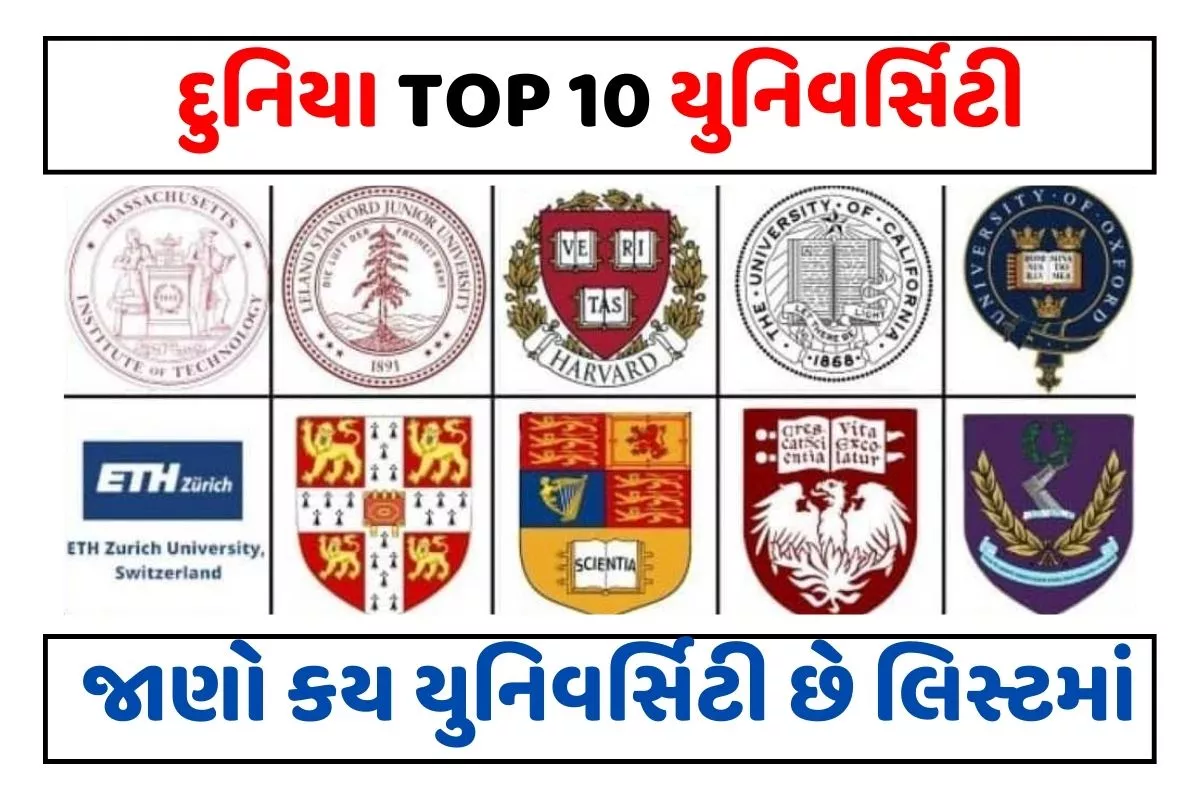Are You Finding For Top 10 universities in the world: Top 10 universities in the world: There are many good universities in different countries of the world including India. Today we will talk about the universities that can be called the top 10 universities in the world. Let’s know in which countries these universities are located and what are their features?
QS World University Rankings 2022 names a total of 1300 universities in the world. Last year, QS released the list of top 1000 universities in the world. However, in the latest ranking, only 35 institutions from India have made it. Out of these, 7 institutions have made it to this list of world’s best universities for the first time.
We are telling you the names of top 10 universities in the world according to QS ranking 2022. In which the first number is MIT of America and the second number is Oxford University of UK.
Top 10 universities in the world
- Massachusetts Institute of Technology: Massachusetts Institute of Technology (MIT), this year also MIT has been ranked as the best university in the world. This university based in Cambridge, USA scored 100 out of 100.
- University of Oxford : Oxford University, UK’s Oxford University is second with a score of 99.5. Its ranking has improved a lot. It was last ranked 5th in the QS ranking list.
- Stanford University : Stanford University, America’s Stanford University has gone down a level. He is third with a score of 98.7. Last year it was the second best university in the world.
- University of Cambridge: Cambridge University’s score is also equal to Stanford’s 98.7. This UK university has established an equivalent position to Stanford in America. Last year it was ranked 7th.
- Harvard University, Cambridge, USA: Harvard University of Cambridge, USA is at the fifth position with a score of 98. Harvard’s score has increased but the position has decreased. Last year he was third with a score of 97.9.
- California Institute of Technology: California Institute of Technology, this US-based institution (California Institute of Technology) is ranked sixth with a score of 97.4. While in last year’s ranking, she was at the fourth position with a score of 97.
- Imperial College London: UK’s Imperial College London is ranked 7th in this list. It has scored 97.4.
- ETH Zurich is a public research university: ETH Zurich, a Swiss Federal Institute of Technology based in Switzerland, has secured the 8th position with a score of 95.4. Last year it was ranked sixth with a score of 95.
- UCL – London’s Global University: UK university UCL London is tied with ETH Zurich with a QS score of 95.5. It was ranked 10th in last year’s ranking. The score was 92.9.
- The University of Chicago: USA’s University of Chicago scored 94.5. This year it ranks last in the list of top 10 universities in the world. Last year it was ranked 9th with a score of 93.1.
#1 Massachusetts Institute of Technology
The Massachusetts Institute of Technology (MIT) is a private university located in Cambridge, Massachusetts. Established in 1861, MIT is spread over 166 acres in the city. Massachusetts Avenue divides the campus into West and East zones. While most of the dormitories are to its west, most of the academic buildings are to the east.

Massachusetts Institute of Technology (MIT)
The university offers both on-campus and off-campus facilities. It is currently home to over 11,900 undergraduate and postgraduate students. About 30% of its student population is made up of foreign nationals. Most of its foreign students take STEM courses at master’s level.
- MIT has a College of Humanities, Arts and Social Sciences, Architecture and Planning, Engineering and Science and Management, and the Schwarzman College of Computing.
- MIT charges an average of $57,590 for its programs. MIT offers need-based scholarships with an average amount of $40,000.
- Massachusetts Institute of Technology graduates are reported to be the second-highest earning professionals in the US with an average starting salary of about $83,600. An MBA from MIT earns an average of $218,000 per year.
#2 University of Oxford England
The University of Oxford (commonly Oxford University or simply Oxford) is a world-renowned university in Oxford, England, the third oldest university in existence today, and the oldest in the English-speaking world. Although the exact day or year of its establishment is not known, there is evidence of educational activity going on in it since at least the 11th century.
The university grew rapidly after 1167, when King Henry II of England banned English students from studying at the University of Paris. Always Oxon as words indicating study or title at the end of the name. (from the Ketin word oxoniensis) is used, although Oxf is also used in some authoritative publications.
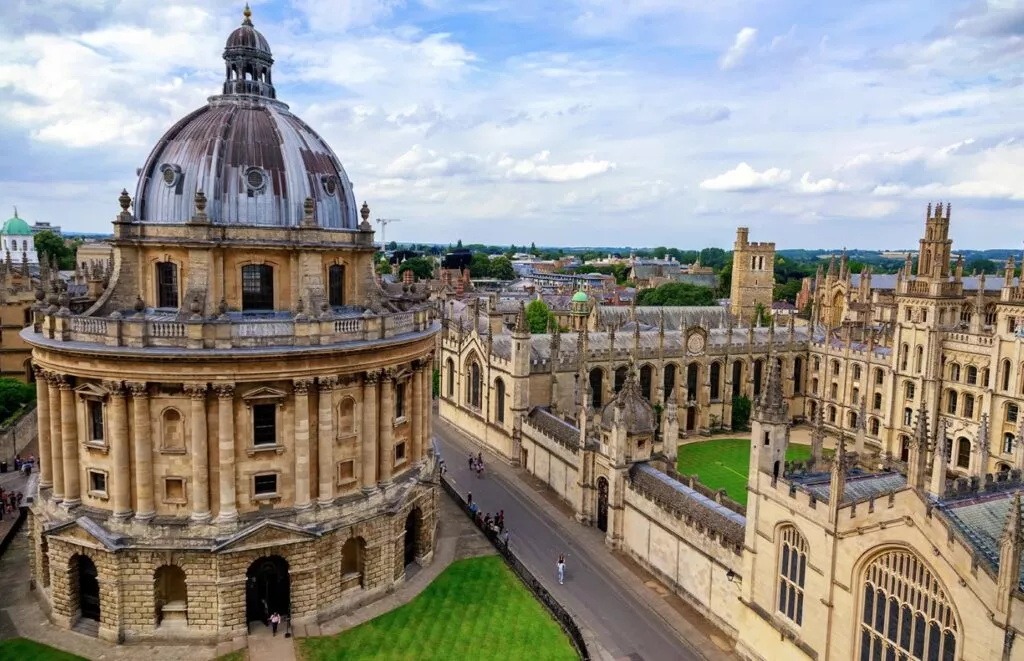
Oxford University UK
In 1209, conflict between university students and the townspeople of Oxford led some teachers to flee north to Cambridge, where they founded a new university, which later became the University of Cambridge.
These two legendary universities have many similarities, and are collectively known as Oxbridge. Along with the long association of these two universities with British culture and history, the rivalry between each other is equally intense.
- The date of establishment of Oxford University is not yet fixed. Education at Oxford was alive in the Yanken style from 1906.
- The expulsion of foreigners from the University of Paris in 1167 forced many English scholars to return from France and settle in Oxford. In 1188 the historian Gerald of Wales lectured the graduates, the first to arrive in 1190 was the famous foreign scholar Amo of Friesland.
#3 Stanford University California
The Leland Stanford Junior University, commonly referred to as Stanford University or Stanford, is a private research university located in Stanford, California, United States. The university was founded in 1891 by California railroad tycoon Leland Stanford and named after his recently ill son.
Companies founded by its graduates include Hewlett Packard, Electronic Arts, Sun Microsystems, Vidya, Yahoo! (Yahoo!) , Cisco Systems, Silicon Graphics and Google.
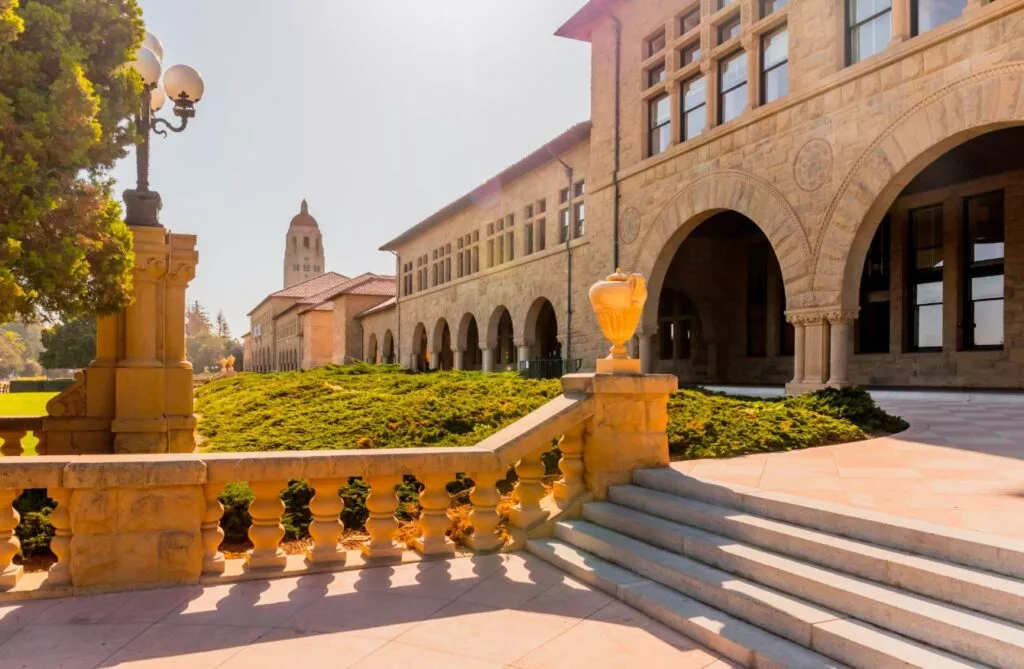
Stanford University California
Stanford is ranked second among the world’s universities by the Academic Ranking of World Universities, and the undergraduate program is currently the largest in the US. Ranked fourth by News & World Report. As of 2010, Stanford is the second most selective academic institution in the country with an acceptance rate of 7.1 percent (with a highly competitive Harvard, which has an acceptance rate of 6.9 percent), with a highly selective regular decision pool at 5.4 percent.
[7]Stanford has approximately 6,800 undergraduate and 8,300 graduate enrollments from the United States and around the world. The university is divided into numerous schools, including the Stanford Graduate School of Business, the Stanford Law School, the Stanford School of Medicine, and the Stanford School of Engineering.
The University’s assets include annual insurance of US$12.6 billion, Which is the third highest annual insurance of any educational institution. Stanford’s track and field program has won the NACDA Directors’ Cup each of the past six years. [8] Stanford, one of two universities competing in the Pacific-10 Conference, maintains its athletic rivalry with Cal.
Stanford was founded by Leland Stanford, a railroad entrepreneur, United States senator, and former governor of California, and his wife, Jane Stanford. It is named in memory of their only child, Leland Stanford, Jr., who died in 1884 just days before his 16th birthday. His parents decided to dedicate a university to their son, and Leland Stanford told his wife, “The children of California will be our children.”
- Senator and Mrs. Stanford visited President Elliott of Harvard and asked how much it would cost Harvard to replicate in California. Elliott replied that he believed $15 million would be enough. However, Stanford received Cornell University president A.D. White was honorably rejected to become Stanford’s founding president.
- Instead, White recommended former student and Indiana University President David Starr take Jordan. He was the final choice to guide Stanford despite an offer to double his Ivy League salary. Members of the local and university community were known to refer to the school as The Farm, an allusion to the fact that the university is located on the former site of Leland Stanford’s horse farm.
#4 University of Cambridge United Kingdom
Cambridge University or Cambridge University is a world-renowned university located in the city of Cambridge in England. The university is the second oldest in English-speaking countries and the fourth oldest in Europe.
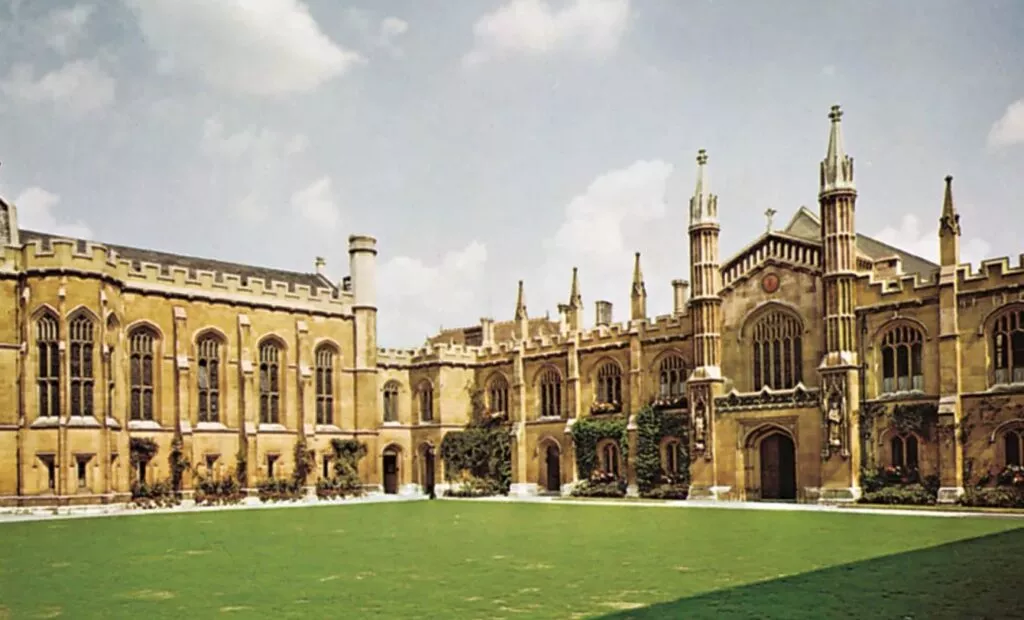
Cambridge University England
According to ancient documents, E. S. The university was founded in 1209 by a group of intellectuals who had left the city of Oxford due to a dispute with the townspeople. Oxford and Cambridge universities are jointly called Oxbridge. The rivalry between the two universities has a long history, embedded in British culture and history.
- Academically, Crabbridge University is ranked among the top five universities in the world. As of 2009, the university’s alumni include 85 Nobel Prize winners.
#5 Harvard University, Cambridge, USA
Harvard University: America’s oldest, largest and world-leading university. The university is located in Cambridge, Massachusetts, near Boston and on the banks of the Charles River. It was originally founded as Harvard College on October 10, 1636 by a resolution of the General Court of Massachusetts Bay Colony. Initially the name of the place was Newtown, which was changed to Cambridge. e. S. In 1780 it was transformed into Harvard University. The name Harvard University is associated with the name of John Harvard, the first donor of Harvard College.
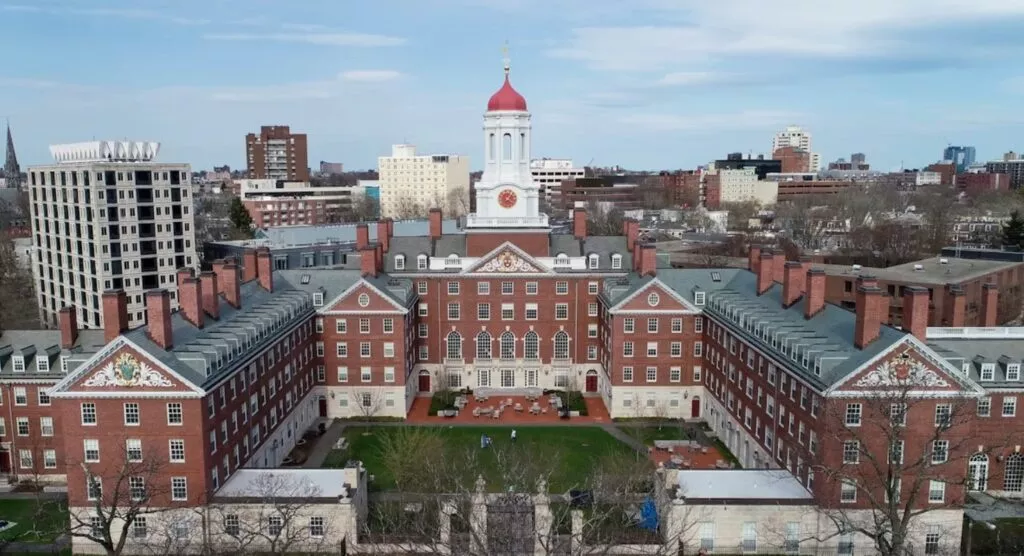
Harvard University
John Harvard e. S. Before he died in 1638, he donated half of his estate and 400 books to Harvard College. The University is managed by an independent corporation. It consisted of a president, a treasurer and five fellows. After this a board of 30 members was formed to appoint the office bearers. e. S. Till 1865 these 30 members were appointed by the State Government; But then these 30 members are appointed by the alumni.
Among the various institutions of this university are some in Cambridge, some in Boston, and some in other parts of the state of Massachusetts, and some in Colorado, Cuba, and South Africa. The university is fully autonomous financially and academically, not state dependent. The university is situated in an area of 4,938 acres.
- Today the university has 2,497 non-medical faculty and 10,674 medical faculty. 6,715 at undergraduate level in academic year 2006–07; 12,424 of graduate-level and vocational courses; A total of 20,042 students were studying with 975 extension students.
- The emblem of the university has the motto VERITAS which is a Latin word. It means TRUTH. The university library has 15.5 lakh volumes. In 2006–07, the University’s revenue was $30 billion and expenditure was $30 billion. As of 2006, the university’s endowment was $292 billion.
- The number of surviving alumni of the university is 2,70,000. 43 of the university’s former and living faculty have been awarded Nobel Prizes.
#6 California Institute of Technology
The California Institute of Technology (branded as CalTech or CIT) is a private research university located in Pasadena, California. The university is responsible for many modern scientific advances and is one of a small group of institutes of technology in the United States that is highly devoted to the instruction of pure and applied science. Due to its history of technological innovation, Caltech is considered one of the most prestigious universities in the world.
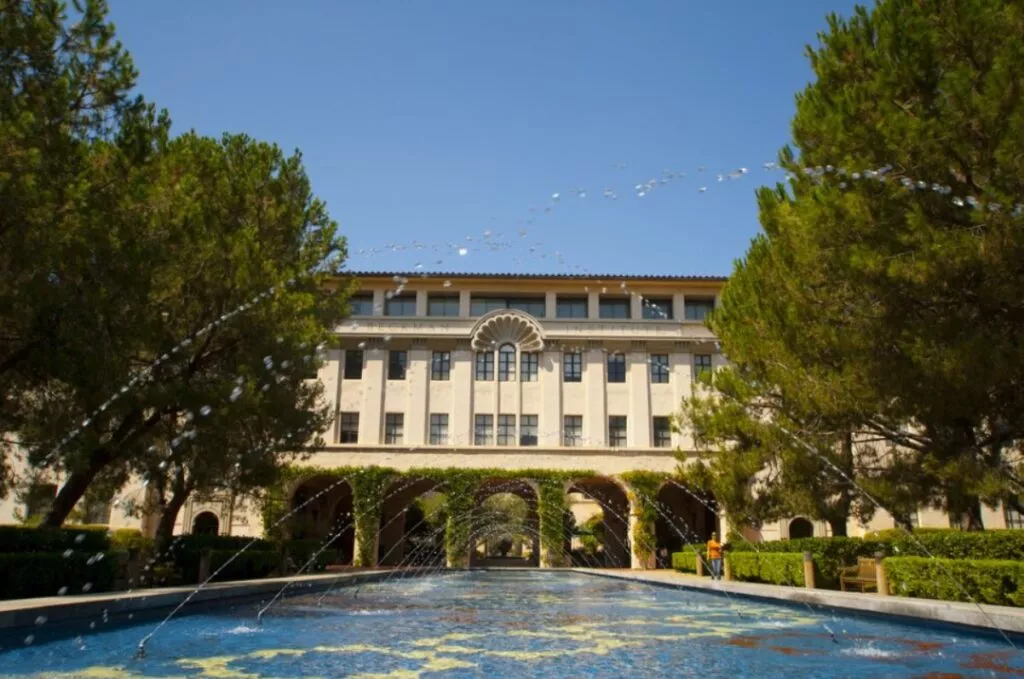
This institution was founded by Amos G. Founded by Throop in 1891 as an introductory and professional school, it began to attract influential scientists such as George Ellery Hale, Arthur Amos Noyes, and Robert Andrews Millikan in the early 20th century. The vocational and preparatory schools were disbanded in 1910 and the college assumed its present name in 1920. In 1934, Caltech was elected to the Association of American Universities, and the precursor to NASA’s Jet Propulsion Laboratory, which Caltech continues to manage and operate, was founded between 1936 and 1943 under Theodor von Karmann.
California Institute of Technology, US
Caltech has six academic departments with a strong emphasis on science and engineering, conducting $332 million in sponsored research in 2011. Its 124-acre (50 ha) primary campus is located about 11 miles (18 km) northeast of downtown Los Angeles. First-year students are required to live on campus, and 95% of undergraduates live in the on-campus house system at Caltech. Although Caltech has a strong tradition of practical jokes and pranks, student life is governed by an honor code that allows faculty to conduct exams from home. The Caltech Beavers compete in 13 intercollegiate sports in the Southern California Intercollegiate Athletic Conference (SCIAC) of NCAA Division III.
- Caltech is a world-renowned science and engineering institution that marshals some of the world’s brightest minds and most innovative tools to address fundamental scientific questions and societal challenges.
- The organization operates JPL for NASA, which sends probes to explore the planets of our solar system and measure changes on our home planet. Caltech also owns and operates large-scale research facilities such as the Seismological Laboratory and the Palomar and W.M. A global network of astronomical observatories, including the Keck Observatories; and co-founded and manages LIGO.
- Caltech is an independent, privately supported institution with a 124-acre campus located in Pasadena, California.
#7 Imperial College London
Imperial College London (or Imperial) is a public research university in London, England. Its history began with Prince Albert, Queen Victoria’s consort, who developed his vision for a cultural precinct that included the Royal Albert Hall, the Victoria and Albert Museum, the Natural History Museum and several Royal Colleges. In 1907, Imperial College London was established by Royal Charter, amalgamating the Royal College of Science, the Royal School of Mines and the City and Guilds of London Institute.[8] In 1988, Imperial College School of Medicine was formed by merging with St Mary’s Hospital Medical School. In 2004, Queen Elizabeth II opened the Imperial College Business School.
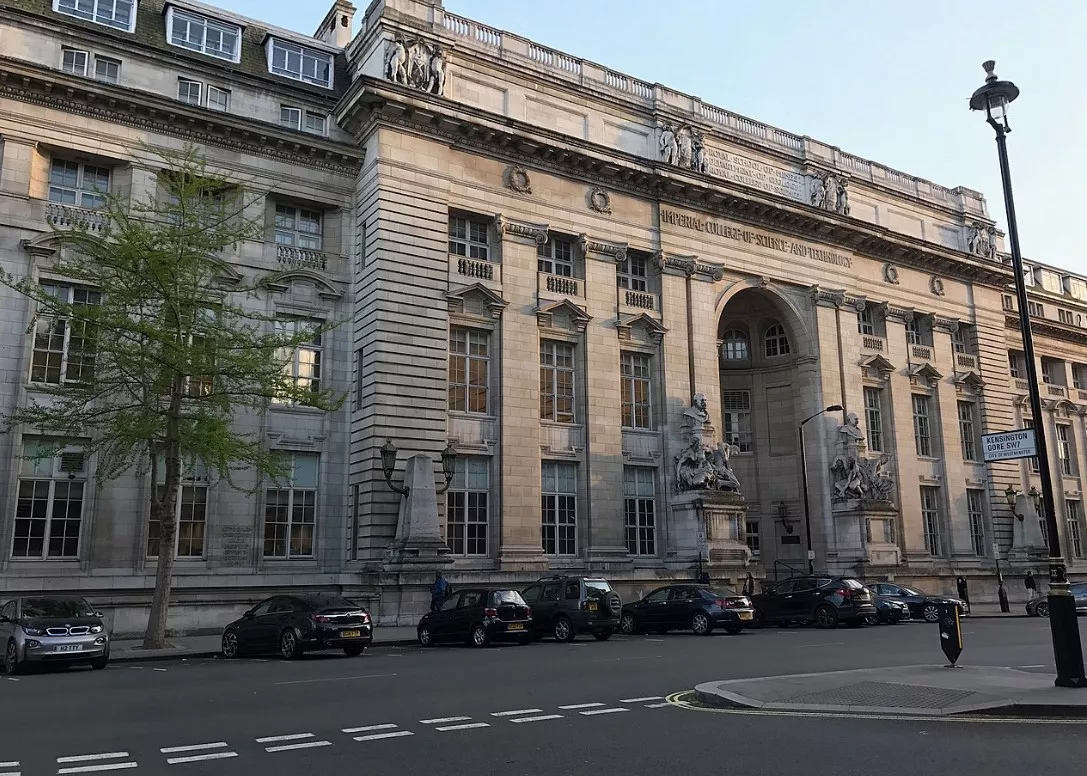
Imperial College London
Imperial College London focuses on science, engineering, business and medicine. The main campus is in South Kensington, where most teaching and research takes place. A second campus in White City provides a platform for innovation and entrepreneurship. The facilities also include teaching hospitals across London which form an academic health science centre. The college was formerly a member of the University of London and became an independent university in 2007. Imperial has a highly international community, with 59% of students from outside the UK and 140 countries represented on campus.
- The first college to lead to the creation of Imperial was the Royal College of Chemistry, founded in 1845 with the support of Prince Albert and Parliament. This was known as the Royal School of Mines in 1853. Medical schools have their origins in several different schools across London, the oldest of which is Charing Cross Hospital Medical School which can be traced back to 1823, followed by Westminster Hospital in 1834 and St Mary’s Hospital in 1851.
- In 1851, the Great Exhibition was organized by Henry Cole and Prince Albert, husband of Queen Victoria, the reigning monarch of the United Kingdom, as a showcase of culture and industry. A hugely popular and financial success, the proceeds of the Great Exhibition were designated to develop an area for cultural and scientific advancement in South Kensington. Over the next six years the Victoria and Albert Museum and the Science Museum opened, joined in 1871 by new facilities for the Royal College of Chemistry, and in 1881 the Royal School of Mines and Natural History Museum opened.
#8 ETH Zurich is a public research university
ETH Zurich (English: ETH; Swiss Federal Institute of Technology in Zurich; German: Eidgenössische Technische Hochschule Zürich) is a public research university in Zurich, Switzerland. Founded by the Swiss federal government in 1854, it was based on the Ecole Polytechnique in Paris, with the stated mission of educating engineers and scientists; The school focuses primarily on science, technology, engineering and mathematics, although its 16 departments span a variety of disciplines and subjects.
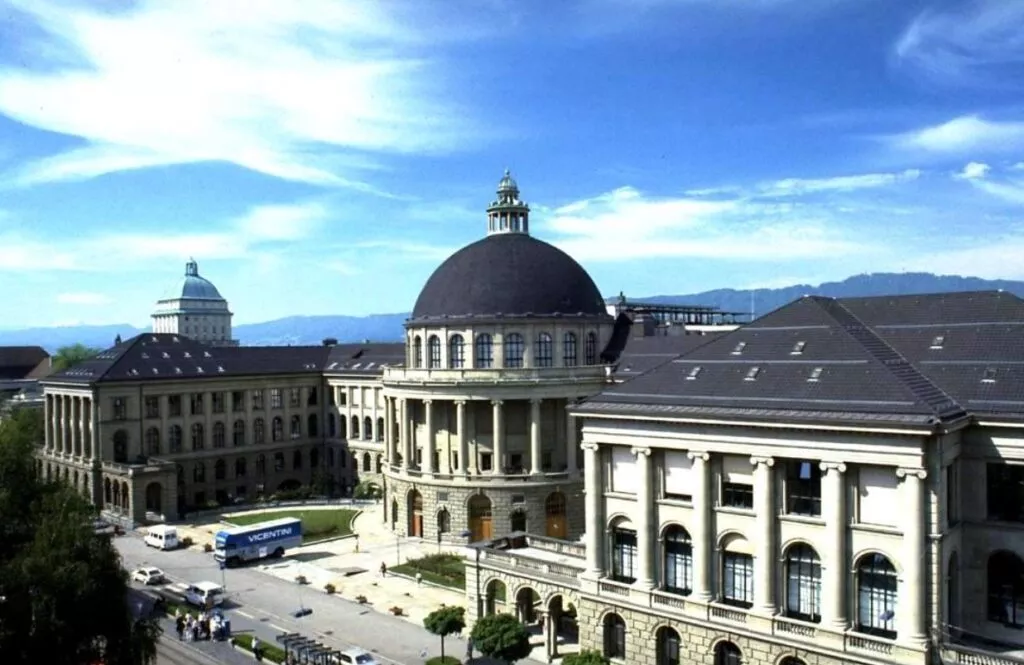
the Swiss Federal Institute of Technology in Zurich; German
Like its sister institution, the Swiss Federal Institute of Technology in Lausanne (EPFL), ETH Zurich is part of the Swiss Federal Institute of Technology domain, a consortium of public universities and research institutes under the Swiss Federal Department of Economic Affairs, Education and Research. . As a public institution, it admits every Swiss resident who has matriculated. As of 2021, ETH Zurich enrolled 24,500 students from more than 120 countries, of whom 4,460 were pursuing doctoral degrees.
- ETH Zurich has a world-class reputation in academia and industry, particularly in science and technology. It is regularly ranked among the top three to five universities in Europe and among the top 15 to 20 universities globally. In the 2022 QS World University Rankings, the university was ranked eighth in the world and fourth in Europe for academic excellence, the 2021 edition ranked it fourth in the world for engineering and technology (second in Europe) and earth and marine sciences. The Times Higher Education World University Rankings for 2022-23 ranked ETH Zurich 11th worldwide.
#9 UCL – London’s Global University
University College London, also known as UCL, is a public research university in London, United Kingdom. Founded in 1826 as the University of London, it was the first university in London and also in England to admit students regardless of their religion.
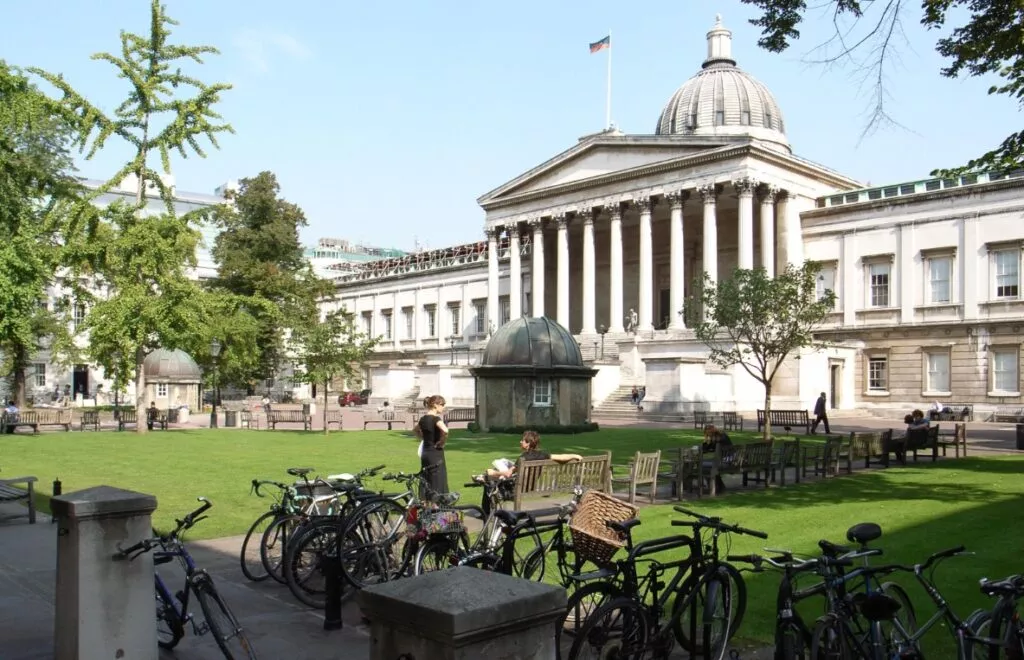
Its main campus is in the Bloomsbury area of London. It has several institutes and teaching facilities in London, in addition to satellite campuses at the Queen Elizabeth Olympic Park in Stratford, London and Doha, Qatar.
University College London – (UCL), London
It is divided into 11 major faculties, under which more than 100 departments, institutes and research centers function. UCL had, in 2019/20, over 43,800 students and over 7,000 academic staff. The number of postgraduate students is slightly higher than the number of students pursuing undergraduate courses.
Although UCL is said to be a constituent college of the University of London, it is autonomous in more ways than one where its own degrees are awarded. The total tuition fee for the MBA program is £56,998 per year.
- The Master of Business Administration at University College London is offered on a full-time basis for a duration of 16 months.
- It is an on-campus program that also includes a part-time program for students.
- The MBA will tap into students’ professional experience and, in turn, provide them with an advanced theoretical and analytical understanding of organizations, their management and the changing global landscape in which they operate.
- This program starts in the month of September.
- Students will go through modules to the value of 210 credits.
- The program consists of seven core modules (105 credits), optional modules of 45 credits and a business research project (60 credits).
#10 The University of Chicago
The University of Chicago (UChicago, Chicago, U of C, or UChi) is a private research university located in Chicago, Illinois. The university’s main campus is in the Hyde Park neighborhood of Chicago.
The University of Chicago’s students, faculty, and staff include 97 Nobel laureates. The university’s faculty members and alumni include 10 Fields Medalists, 4 Turing Award winners, 52 MacArthur Fellows, 26 Marshall Scholars, 53 Rhodes Scholars, 27 Pulitzer Prize winners, 20 National Humanities Medalists, living billionaires, and eight Olim graduates.
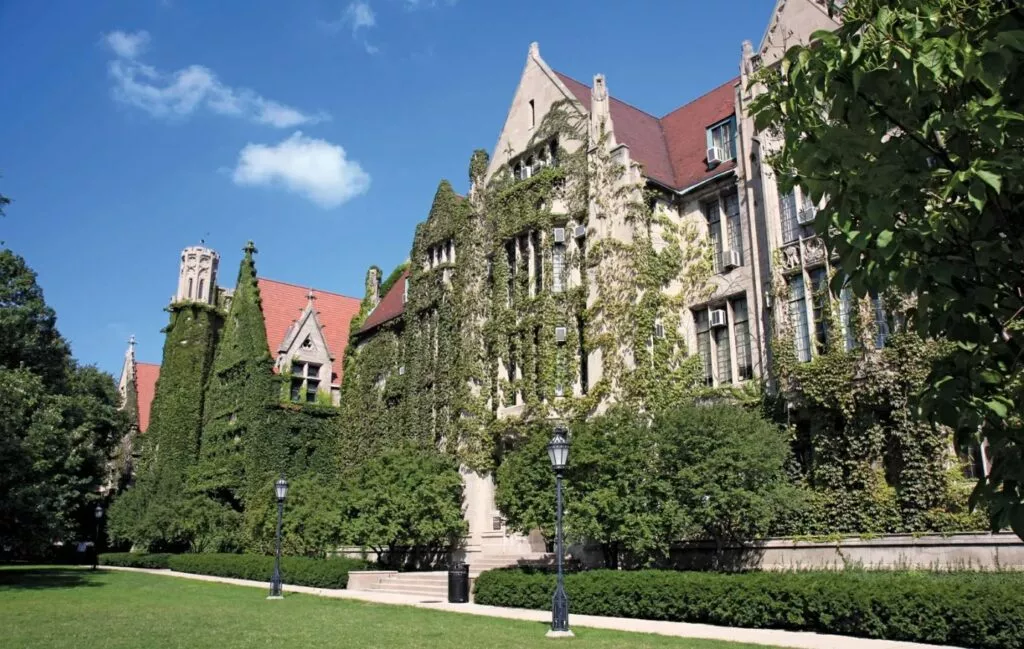
University of Chicago
The university is composed of one undergraduate college and five graduate research departments, which include all the university’s graduate programs and interdisciplinary committees. It has eight professional schools: Law School; The Booth School of Business; Pritzker School of Medicine; Crown Family School of Social Work, Policy and Practice; Harris School of Public Policy; Divinity School; Graham School of Continuing Liberal and Professional Studies; and the Pritzker School of Molecular Engineering. The university has additional campuses and centers in London, Paris, Beijing, Delhi, and Hong Kong, as well as downtown Chicago.
- Scholars from the University of Chicago have played a major role in the development of many academic disciplines, including economics, law, literary criticism, mathematics, physics, religion, sociology, and political science, establishing the Chicago Schools in various fields. The Metallurgical Laboratory of Chicago produced the world’s first man-made, self-sustaining nuclear reactor in Chicago Pile-1 below the viewing stand at the university’s Stagg Field.
- Advances in chemistry led to the “radiocarbon revolution” in carbon-14 dating of ancient life. And things. The university’s research efforts include administration of the Fermi National Accelerator Laboratory and Argonne National Laboratory, as well as the Marine Biological Laboratory. The University is also home to the Chicago Press, the largest university press in the United States.


